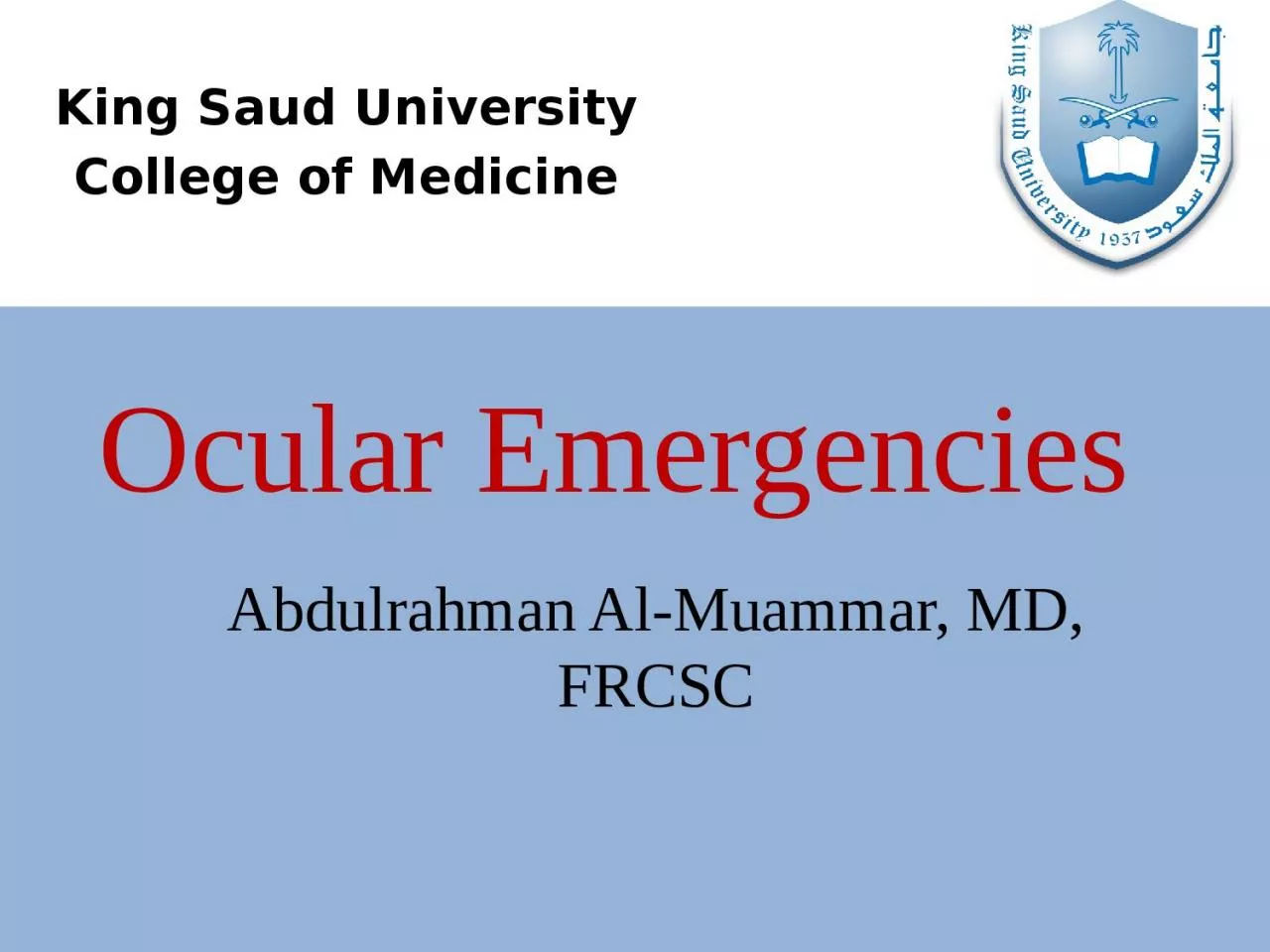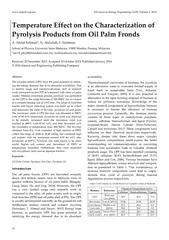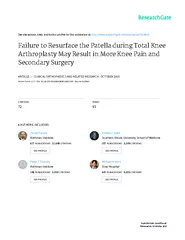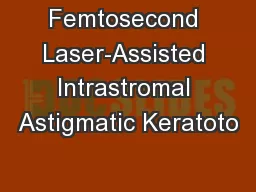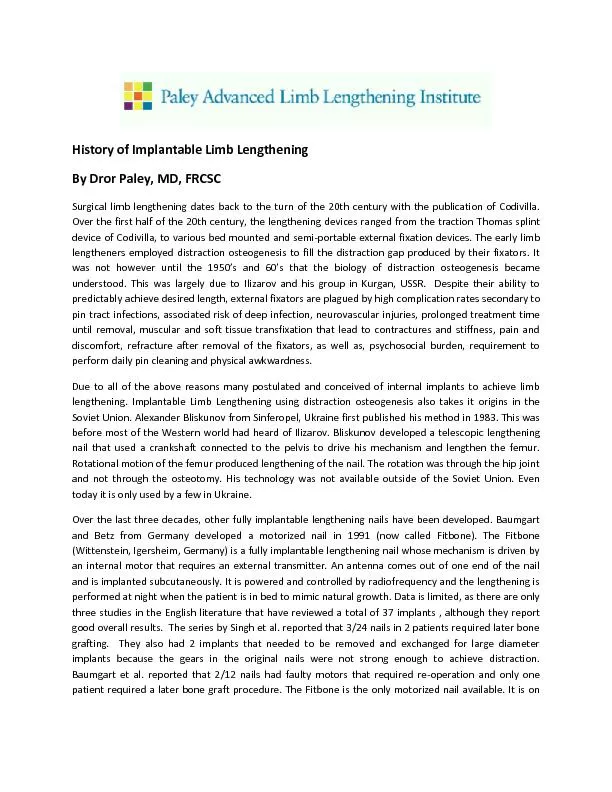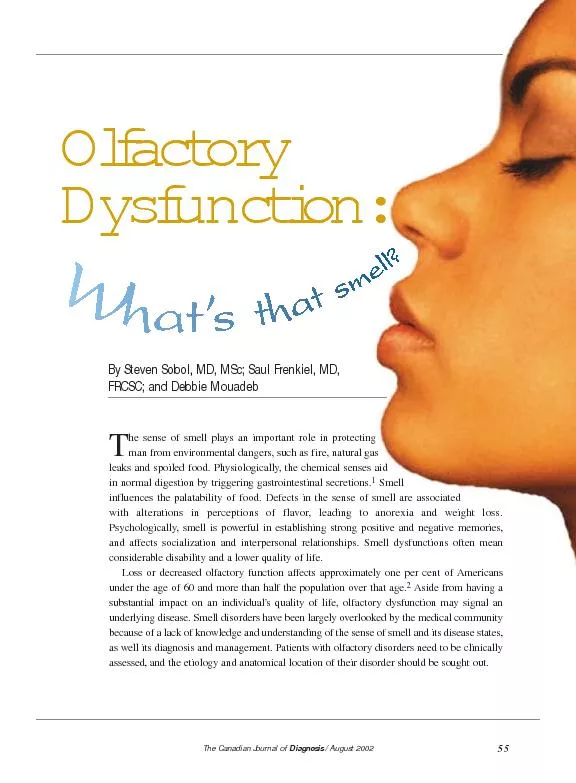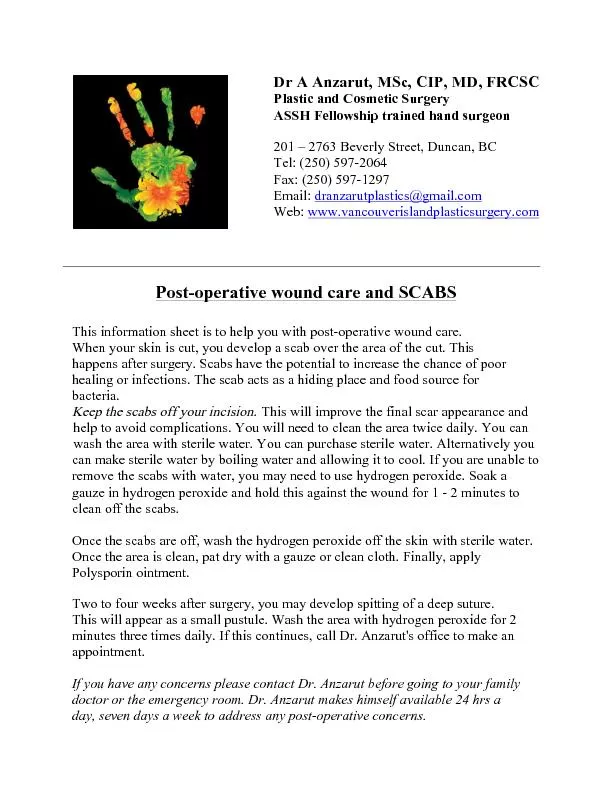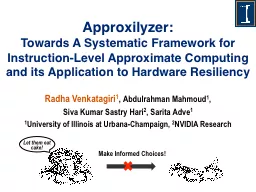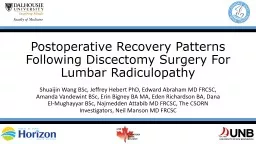PPT-Abdulrahman Al-Muammar, MD, FRCSC
Author : brooke | Published Date : 2024-02-02
Ocular Emergencies King Saud University College of Medicine Ocular Emergencies Corneal abrasion Corneal ulcer Chemical injury Uveitis Acute angle closure glaucoma
Presentation Embed Code
Download Presentation
Download Presentation The PPT/PDF document "Abdulrahman Al-Muammar, MD, FRCSC" is the property of its rightful owner. Permission is granted to download and print the materials on this website for personal, non-commercial use only, and to display it on your personal computer provided you do not modify the materials and that you retain all copyright notices contained in the materials. By downloading content from our website, you accept the terms of this agreement.
Abdulrahman Al-Muammar, MD, FRCSC: Transcript
Download Rules Of Document
"Abdulrahman Al-Muammar, MD, FRCSC"The content belongs to its owner. You may download and print it for personal use, without modification, and keep all copyright notices. By downloading, you agree to these terms.
Related Documents

